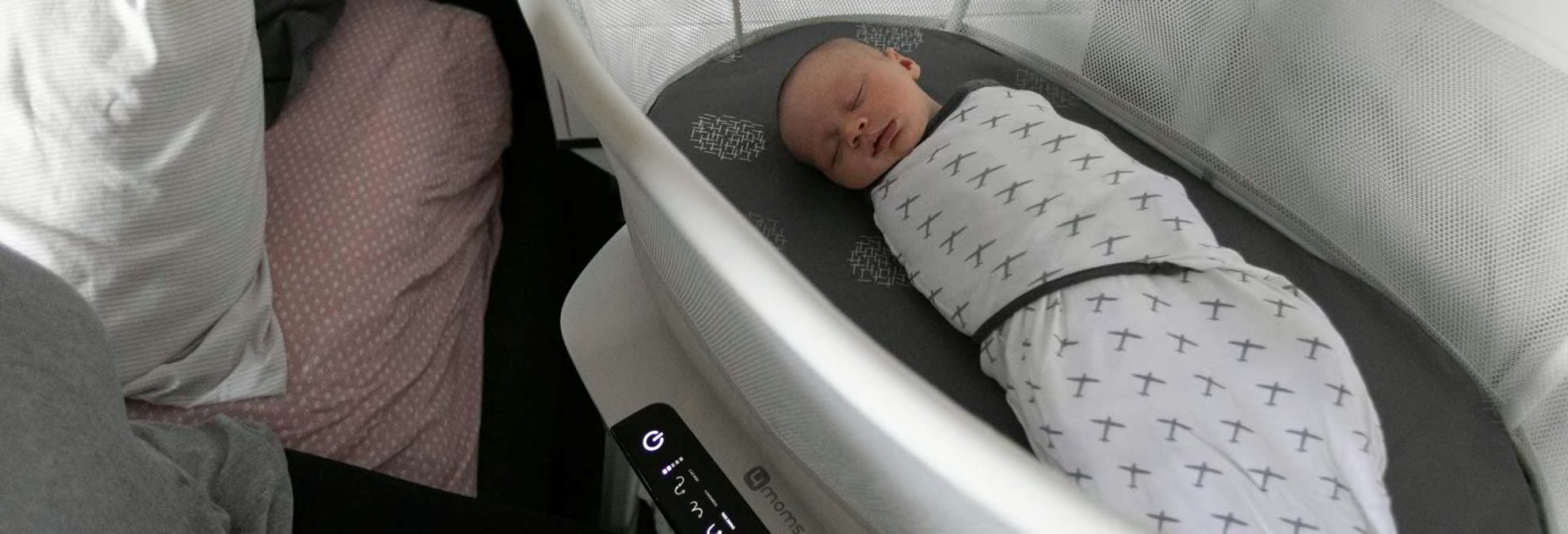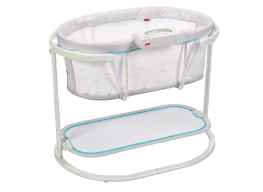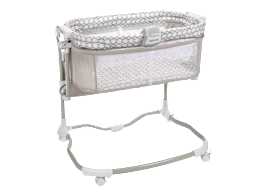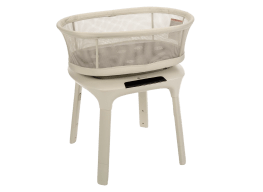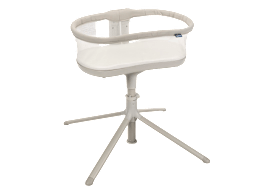In 2022 the Infant Sleep Product Rule from the Consumer Product Safety Commission (CPSC) went into effect, requiring all products marketed or intended for infant sleep to meet federal safety standards. That means that if you buy a new product in the U.S. from an established retailer, it should have met federal safety standards. But there are still a few things you’ll want to keep in mind.
First of all, the absolute basics: Baby should sleep flat on their back, in their own sleep space, with a firm, flat mattress and no blankets, bumpers, or toys. A crib or bassinet mattress should be firm enough that it doesn’t sink beneath your baby’s weight. The mattress should also fit snugly into the bassinet, since your baby can get trapped in any gaps between the mattress and the side of the bassinet. It shouldn’t be superthick, either—1½ inches, max.
If you can, buy a new bassinet, or ensure that all product features are in line with the current safety standards as established by the CPSC. You can also check to make sure that the product in question hasn’t been subject to a recall or warning. And just say no to grandma’s old bassinet that has been in the family for half a century. Safety standards have evolved over the years, and those years may have taken their toll on the product itself and weakened its structural integrity.
A crib mobile—or, in this case, a bassinet mobile—is adorable, but don’t let it hang too low, and move it once your baby can sit up on their own. Loose toys should remain out of your baby’s bassinet, but according to the AAP, toys that clasp securely to the bassinet’s edge are probably okay, though the organization says your baby isn’t likely to be too interested in them at first.
While bassinets are more portable than cribs, you still don’t want to move them around the house with the baby inside. “If you trip, the baby could be injured; they could fall out,” says Joan Muratore, who leads much of Consumer Reports’ baby product testing. “That’s not good with an infant when their skull isn’t fully fused. And suppose something failed or collapsed. You just don’t know what’s going to happen.”
Finally, keep in mind: Bassinets are a short-term solution. You can use them for only a few months, and by that point, you’ll want a more appropriately sized sleep solution. Might we direct you, then, to our crib buying guide and the best cribs of the year?
















